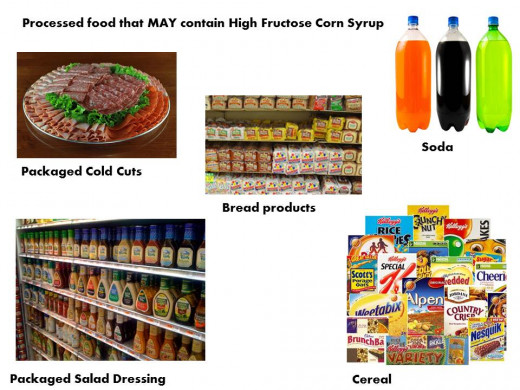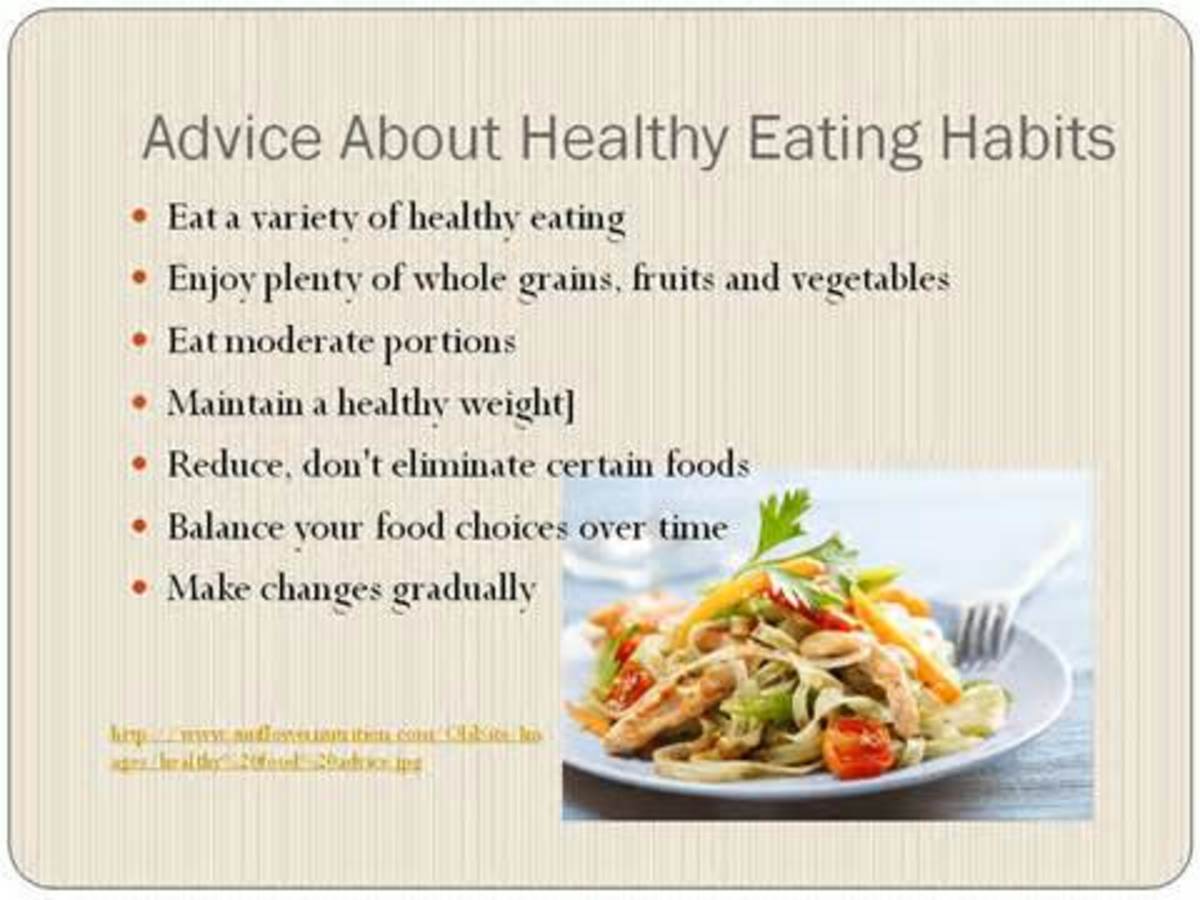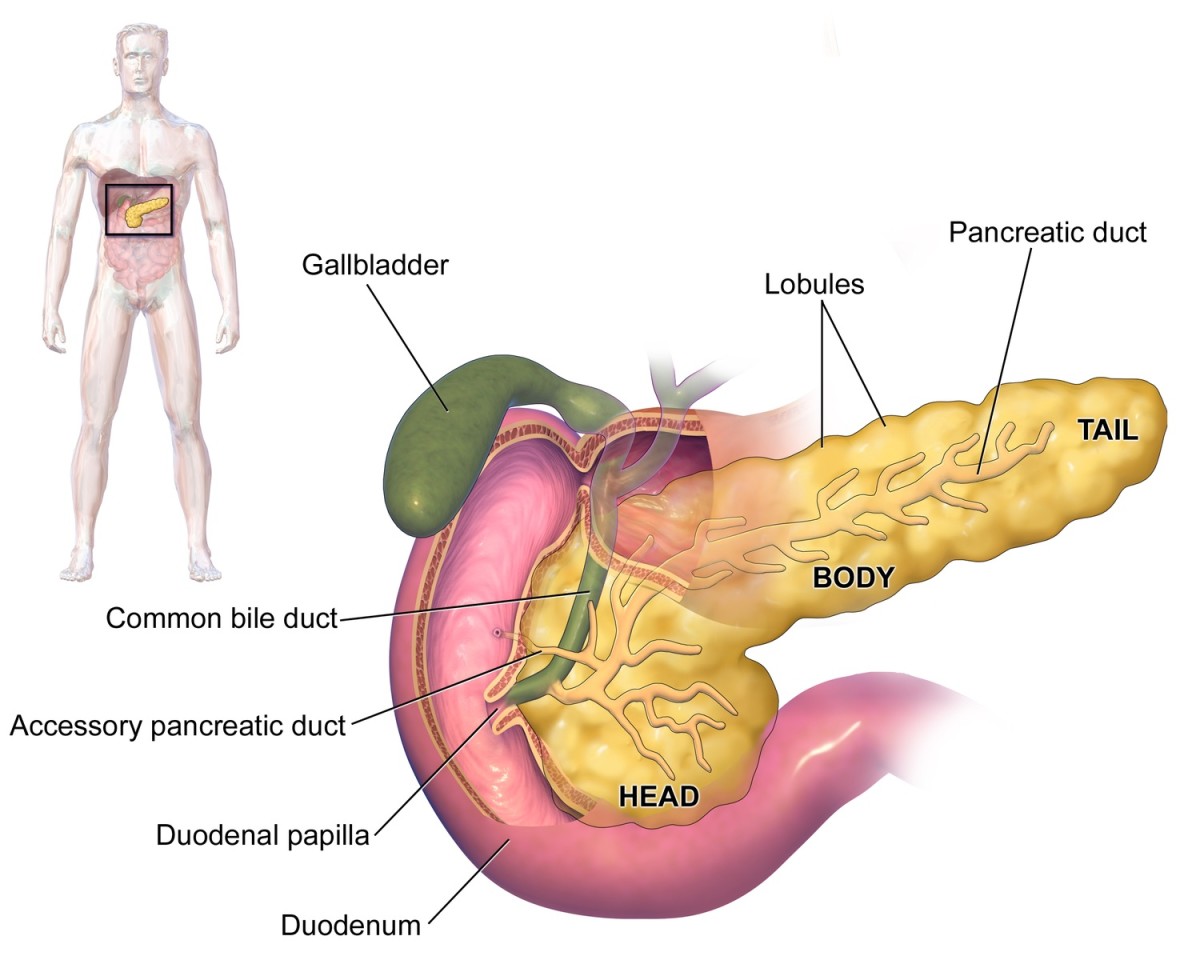Fructose vs. Glucose- Does your body know the difference?
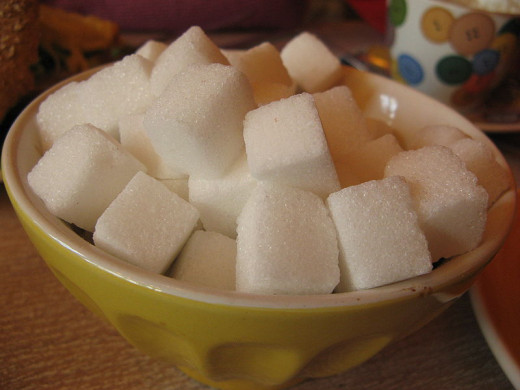
Are all dietary sugars created equally or can our bodies tell the difference when they are ingested and broken down during metabolism? In today’s world it looks as though fructose, particularly when found in High Fructose Corn Syrup (HFCS), has achieved the status of public enemy number one. Does our body treat fructose differently than other sugars? Let’s start with the basics and work our way up this complex issue.
Sugar belongs to the larger category of carbohydrates; carbs are one of the essential building blocks in the body and thus a required dietary need. The energy currency in the body is glucose, we need it for pretty much everything our body does. In order to keep things going we need to consume carbohydrates in some form to break them down to glucose for use. The category of carbohydrates includes both simple and complex sugars- simple sugars are monosaccharides while complex sugars include polysaccharides such as fiber. The three dietary monosaccharides are glucose, fructose, and galactose. Fructose and glucose are structural isomers of each other, they have the same exact chemical components- C6H1206- but they are arranged in a slightly different way. Specifically the carbonyl group (C=0, carbon double bonded to oxygen) resides on a different carbon for the two sugars. For glucose the carbonyl belongs in the carbon one position and for fructose it is located on the carbon two. Although the monosaccharides are often depicted as linear structures whenever they are around water they are in the ring form. The ring forms of fructose and glucose differ as well; glucose forms a six-membered ring with five of the carbons and the oxygen, while fructose forms a five-membered ring, with four of its carbons in the ring with the one oxygen. The additional two carbons are found outside of the ring for fructose while only one of glucose’s carbons is outside of the ring structure.
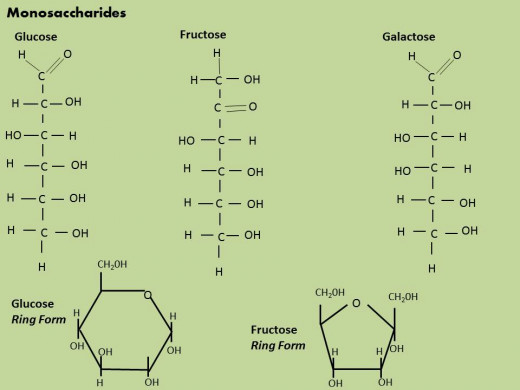
Glucose is the energy source of the human body, used in virtually every cell, tissue, and organ to feed into the complex metabolic pathways, those ones biology majors had to painstakingly memorize in school. The really, really short version is carbohydrates are broken down in the body to get glucose, which is pumped into pathways to generate ATP which is used to enable reactions in the body including all the reactions within metabolic pathways in the first place as well as normal cell function, muscle contraction, and nervous system function.
Lactose (milk sugar) = galactose + glucose
Sucrose (table sugar) = glucose + fructose
Maltose (malt sugar) = glucose+ glucose
In foods, glucose is coupled with another monosaccharide to give the various disaccharides (see their components on the right). Maltose is rarely found as a food component, it is more so a breakdown product of starch, as starch consists of many glucose molecules and thus maltose is made as an intermediate breakdown product of starch digestion. Sucrose at one point was the go-to sweetener added to processed foods but manufacturers stumbled upon the monosaccharide fructose to use instead since it is both sweeter and a less expensive alternative to sucrose. High Fructose Corn Syrup (HFCS) is corn-based product that is first hydrolyzed into glucose then enzymatically made into fructose by isomerization. One major thing to keep in mind about the difference between HFCS and sucrose is there isn’t that much of a difference between the two. Sucrose contains equal parts glucose and fructose, a 50/50 split. HFCS commonly found in foods ranges from 42 to 55% of fructose with the remainder being made up with glucose. HFCS42 is found in a variety of processed foods while both Coke and Pepsi (regular not diet) list HFCS55 as an ingredient.
Insulin Sensitivity- level of cellular response to insulin, the hormone responsible for removing excess glucose from the blood.
Insulin Resistance- pathologic state where cells fail to respond to insulin, contributes to hyperglycemia (too much glucose in bloodstream).
Dyslipidemia- any abnormality in the level of lipids in the blood, this can be too many or not enough of any of the classes of lipids.
Lipids include total cholesterol, cholesterol carriers- LDL (low-density lipoproteins) and HDL (high-density lipoproteins), as well as others named for their density- very low or intermediate; triglycerides (made of up glycerol and three fatty acids), and triglyceride carriers- chylomicrons.
Here’s the question we need to ask in examining fructose’s notorious status: how does fructose metabolism work compared to glucose metabolism? All carbohydrates began their digestion right at the start of things, in the mouth. Salivary amylase begins breaking bonds there and continues until the stomach inactivates the enzyme. In the stomach, acid can work on carbs although the major digestion is done in the small intestine by several different enzymes- first up: pancreatic amylase, along with sucrase, maltase, and lactase which as their names imply they break down the disaccharide in question to its precursory monosaccharides. From the small intestine glucose, fructose, and galactose are absorbed into the bloodstream and sent off to the liver, the major monosaccharide manager of the body. It is generally thought fructose and galactose are then converted to glucose.
So if conversion to glucose largely represents fructose’s fate what is the big deal in consuming lots of fructose in one’s diet? Well the big deal is it’s not a simple conversion from fructose to glucose. Fructose breakdown begins with its initial metabolites, which can be built back up again to make glucose. The problem-its metabolites can also be used to fuel lipid production. There are studies out there that have shown consuming fructose-enriched foods gives rise to an increase in lipid metabolism. One study in particular looked at consumption of fructose-sweetened beverages over a 10 week period in overweight and obese people. This gave way to an increase in de novo lipid synthesis, promotion of dyslipidemia, impaired insulin sensitivity, and increased visceral adiposity. Animal studies have also pointed towards the link between fructose overconsumption and problematic lipid metabolism, leading to increased risk of cardiovascular disorders.
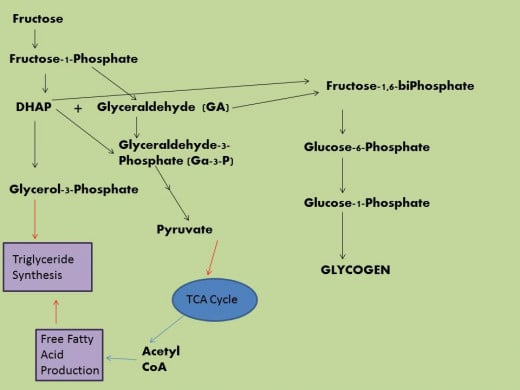
Ultimately the body views fructose and glucose as two separate things- glucose serves a major fuel role in the body, sure it initially is sent to the liver but it spends most of its time in far off places- all of the bodies’ muscles and organs- to take part in the energy generating pathways to allow the kick start necessary for cell division, ion channel function, just about everything. It is only in a surplus does glucose serve its other functions- it can be stored as glycogen in the liver or broken down to make lipids which also serve as energy storage components. Fructose on the other hand is viewed by the body to be used for glycogen production and for de novo lipogenesis. The body doesn’t keep that much glycogen on hand, only enough for about day. So it is not a matter of there being additional glycogen production and storage when a person ingests more fructose, the excess is used to create lipids. The take home here is glucose is used for energy and fructose is used for storage.
The different ways these two monosaccharides are treated by the body also has to do with the specificity of the enzymes that break them down. Although glucokinase can break down fructose generally fructokinase gets to it first, immediately tacking a phosphate group onto fructose and weighing it down. This prevents it from roaming free like glucose. All of fructose metabolism is done in the liver, whereas only a small portion of gluctose metabolism is conducted in the liver. Overconsumption of fructose puts a strain on the liver and increases its role in lipid metabolism. These major roles, storage for fructose and energy sourcing for glucose, are important to keep in mind when looking at the pathways these two sugars can get themselves into since overall the pathways are similar. Also another key difference between fructose and glucose is insulin’s role in their breakdown- glucose is metabolized in an insulin-dependent manner, while fructose is metabolized in an insulin-independent manner. Ultimately which monosaccharide you ingest does make a difference to your body since glucose has a different role than fructose. However both are necessary components to ensure proper body functioning- we do need fat as a storage vessel for energy and thus we need fructose. Maybe the problem is people only want a yes or no answer on something but the human body is a complex system and a black or white answer doesn’t paint the full picture for any given required dietary component.
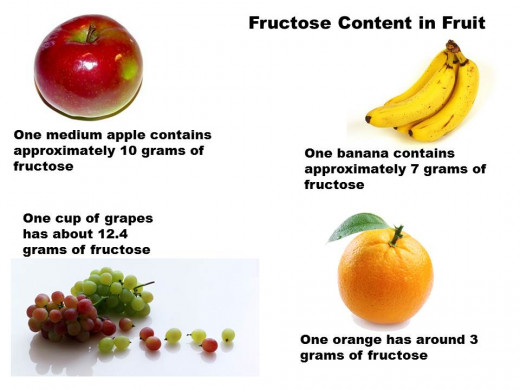
The thing that struck me while researching this article is when people make the decision to wipe something out of their diet what exactly are they basing that decision on? Are they digging into the real research- the controlled trials and observational studies; are they following the metabolic pathways and truly understanding exactly where the food components are broken down and what their metabolites are being shuttled into? The fructose issue is a pretty complex one, for one it is not totally clear to researchers yet what specifically is the difference between a diet high in fructose compared to sucrose or even just a high carbohydrate diet in general. Another reason this is complex is because these metabolic pathways are confusing. Plus research so far has yielded inconsistent results which point towards fructose metabolism as being varied based on the individual's body. Just because a pathway is written up in a biology book and students are forced to memorize it doesn't mean this is what is going on a day-to-day basis in each and every person every time that person ingests sugar.
HFCS commerical
I, for one, liked those commericals that were shown in the US a while back when people where taking HFCS at face value as being bad, but when another person asks them why they couldn't give them a concise answer other than the 'well everyone else says HFCS is bad.' I am all for people making educated decisions about their diet if these decisions are truly informed and not based on one non-scientific article or hearsay. Ultimately the matter of fructose needs to be looked into further, researchers are still putting together the pieces to determine how best to look at this issue, including the best experimental design specifically with ensuring the controls are appropriate. An important discovery in this research thus far has pointed to the idea of problems with fructose being multifactorial in nature, based on human studies. It’s not just how much fructose one consumes, the outcome seems to involve the person’s diet in total as well as their body weight. In general terms it does seem like laying off massive amounts of artificially sweetened, processed foods is the way to go but an extreme view of ridding one’s diet of foods that naturally contain fructose, like fruit which also contains other healthy things (fiber, vitamins, antioxidants), seems to be overkill.
